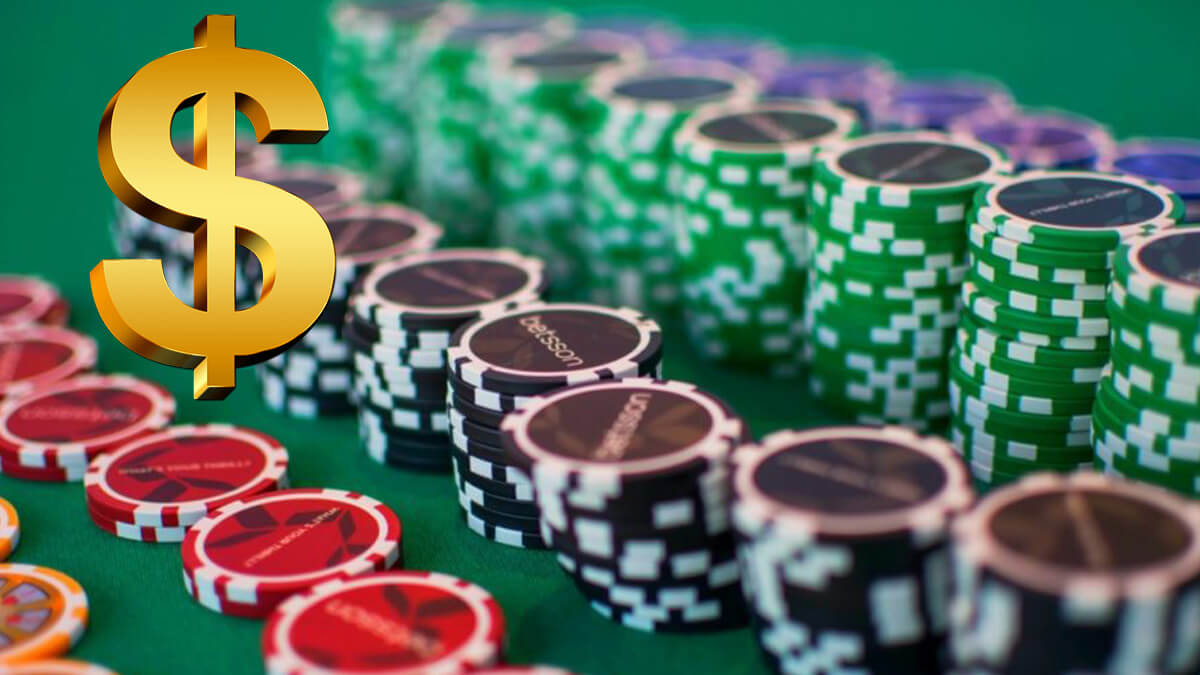If you’ve ever been to a casino, you’ve seen casino chips. If you play gambling machines exclusively, you might have never used casino chips, but you’re bound to have at least seen them on the tables where people are playing blackjack, craps, and/or roulette.
You’d be surprised to know that there’s more to casino chips than you probably thought.
Here are a few things you probably didn’t know about casino chips:
You Buy and Sell Chips to the Casino
Casino chips are multi-colored clay disks that you use to wager with in the casino. You usually buy such chips from the dealer at the table by putting cash on the table. When you’re ready to cash out, you must visit the cage and sell the chips back to the cashier.
You cannot sell your chips back to the dealer, but you CAN exchange lower-denomination chips for higher denomination chips with the dealer. This is called “coloring up.”
For Example:
If you have enough $5 chips to exchange them for a $25 chip, you can do so with the dealer. But if you want to exchange that $25 chip for cash, you must visit the cashier’s cage.
Casino Chips Have Specifications
Most of the chips you’ll play with in the casino are made of clay, but they’re not 100% clay. They’re actually made from multiple materials (including clay and chalk) that make the chips harder to break. Different casino chip makers use different processes to manufacture these chips.
You’ll notice that in most casinos, the edges of the chip are 2 different colors – the main color of the chip along with a 2nd color. That’s not paint – that’s where the manufacturer took pieces of clay off the chip and replaced it with clay of a different color.
The logo of then casino is normally printed onto the chips, too – this is called an inlay, which is actually a piece of paper covered with a piece of plastic. The paper and plastic don’t peel off, either – they’re fused to the chip during the manufacturing process.
Casino chips in the United States generally weight 10 grams.
If and when you buy casino chips for a home poker game or the like, look for chips that weigh at least that much.
Casino Chip Colors Are Close to Standard Throughout the United States
Most casinos in the United States follow the same color scheme as it relates to the denominations. The $1 chips are almost always white, and some casinos also have pink chips worth $2.50. (Those are rare, now, though.)
- $5 chips are red, and yellow chips are worth $20 each.
- $25 chips are common, and they’re colored green.
- Then you start getting into the higher denominations. Black chips are worth $100 each, and you can even find purple chips worth $500.
- $1000 chips are usually orange, and $5000 chips, gray.
Casino Chips Are Also Collectibles
In the 1980s, it became popular to collect casino chips as a hobby. This shouldn’t surprise anyone who knows a coin collector, and it’s probably accurate to think of casino chip collecting as being a sub-category of coin collecting.
I’ve kept casino chips from the casinos I’ve visited just as souvenirs, and I suspect that’s common.
But collectors take casino chip collecting more seriously, and you can find all kinds of casino chips for sale on eBay.
When I did a search for “casino chips” on eBay, I got almost 40,000 listings.
At one time, you could subscribe to magazines about collecting casino chips. Casino Collectible News is probably the most popular publication on the subject today. It’s a quarterly publication, and ChipGuide.com is a popular site for collectors.
In fact, casino chip collectors even have their own convention each year.
As with most collectibles, casino chip collectors have a grading system – the better the condition the chip is in, the more it’s worth. You can buy price guides that provide estimates of what a specific casino chip might be worth on the collectors’ market, but keep in mind that a collectible is only worth what you can get someone to pay for it.
You Never Use Casino Chips With Slot Machines
Slot machines used to use coins, and I have fond memories of carrying around the plastic buckets that the casinos provided for transporting those coins. For the most part, those days are now gone. Gambling machines in casinos now use a ticket in/ticket out system.
Most slot machine players insert cash into the machine, and the gambling machine converts those into credits. When you decide to cash out, you get a paper ticket you can exchange for cash. You don’t have to visit the cage for this; the casino has multiple machines which convert these paper tickets into cash for you.
You can use debit cards to fund your play on some slot machines, but in most states, you’re not allowed to use a credit card for this. In fact, some states don’t allow debit card use at the slot machines, either.
I’ve never seen a casino with slot machines that accepts or pays out in chips, though.
Five Star Solutions is the company that developed the technology that made ticket in ticket out the standard for putting money into and taking money out of slot machines. MGM bought the technology in 1992. MGM went on to team up with multiple slot machine manufacturers to create a reader that could accept cash or a ticket with a bar code. International Game Technology (IGT) eventually bought the patents for the technology and rolled out their own version.
Opinions are mixed about the change still. The casino likes the new system because they no longer have to fill hoppers with coins. Gamblers also like the system because they don’t have to wait for a slot machine attendant to pay off their big wins.
From the casino’s perspective, ticket in ticket out is convenient from an accounting perspective. After all, there’s no cash to count.
Critics dislike the system because tickets aren’t the same thing as money, which makes it easier for gamblers to become addicted. It’s also easier to lose a ticket than it is to lose a plastic bucket full of coins. Speaking for myself, I miss the sound of a bunch of coins falling into the payout tray. There’s nothing quite the same as the sound of coins falling into a metal tray.
The Use of Casino Chips Can Be Traced to 18th Century France
In France during the 1800s, games like Ombre and Quadrille used counters for scorekeeping. You can consider casino chips the direct descendants of these counters. Like modern roulette chips, the different colors signified who the chips belonged to rather than their denomination.
Early Poker Games in the United States Used Various Tokens to Stand in for Money.
Gold coins were commonly used, but early poker players also often used early versions of chips made from a variety of materials. In the late 19th century, multiple companies started manufacturing chips for poker players to use.
Most of these chips used the same color systems you’d find if you bought a set of poker chips today.
High Stakes Games Use Gaming Plaques
In really high stakes games at some casinos, it’s common to use gaming plaques in the place of chips. These are only used in games where the stakes are $25,000 or more per bet. Since they’re so valuable, they’re larger and have serial numbers on them.
If you want to add a little spice to your home poker game or your charity casino event, you can buy ceramic poker plaques for as little $1 to $5 apiece. They’re usually ceramic and weight 40 grams or so. You can buy them blank, or you can buy them with denominations printed on them.
The $1 plaques look almost exactly like poker chips, but they’re rectangular and larger. The patterns around the edges are much the same, though.
Conclusion
Casino and poker chips make for an interesting discussion. Next time you’re playing poker with your buddies, you can pull a Cliff Clavin and share some of these pieces of poker and casino chip trivia and impress everyone in the game with you.
Michael Stevens
Michael Stevens has been researching and writing topics involving the gambling industry for well over a decade now and is considered an expert on all things casino and sports betting. Michael has been writing for GamblingSites.org since early 2016. …



